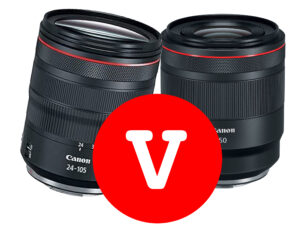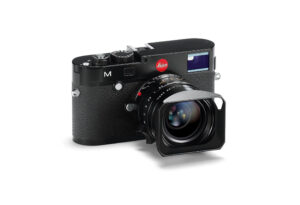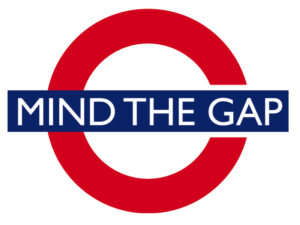In the realm of consumer technology, Apple has long been synonymous with innovation that enhances productivity and fosters social connectivity. From the iPhone and iPad to the MacBook and Apple Watch, each product has carved a niche, promising to revolutionize how users work, create, and connect. However, the Apple Vision Pro, a mixed-reality headset unveiled in June 2023, represents a marked departure from this tradition. Despite its cutting-edge technology and ambitious goals, the Vision Pro faces significant challenges that may impede its success.
A New Frontier: Mixed Reality with Vision Pro
Apple Vision Pro is marketed as a “spatial computer,” integrating digital media seamlessly with the real world through advanced inputs like motion gestures, eye tracking, and speech recognition. This headset runs on visionOS, a mixed-reality operating system derived from iPadOS, allowing users to interact with a 3D user interface where windows float within their surroundings. The device also features avatars and a front display that renders the user’s eyes, aiming to enhance communication with bystanders.

Despite these groundbreaking features, Apple has deliberately avoided branding the Vision Pro as a virtual reality headset. Instead, the focus is on a mixed-reality experience that combines elements of both augmented reality (AR) and virtual reality (VR). This positioning, while innovative, places the Vision Pro in a somewhat ambiguous category, potentially complicating its market reception.
Contradicting Apple’s Legacy of Productivity and Social Connectivity
Historically, Apple’s products have been celebrated for their ability to enhance productivity and facilitate collaboration. The MacBook, iPad, and iPhone are designed to make users more productive, creative, and socially connected. Apple’s marketing campaigns have consistently highlighted how these devices can help users achieve professional excellence, collaborate effortlessly, and stay connected with loved ones.
In stark contrast, the Vision Pro is an inherently solitary device. Unlike the iPad Pro, which can be used to deliver engaging presentations or collaborate in real-time, the Vision Pro isolates the user. It’s difficult to envision a scenario where one can deliver a presentation, maintain eye contact with the audience, and interact dynamically using this headset. This fundamental shift away from collaborative and social applications challenges Apple’s established brand identity.
Apple’s Marketing Evolution: From Social to Solitary
Apple’s marketing history showcases a narrative of productivity and social connectivity. In 2001, an Apple commercial depicted an iBook user editing a video on a plane, emphasizing the product’s ability to facilitate creative work even while traveling.
Similarly, the 2013 Christmas commercial “Misunderstood” featured a teenager seemingly engrossed in his iPhone, only to reveal that he had been creating a heartfelt home movie for his family.
These advertisements underscored Apple’s commitment to products that not only enhance individual creativity but also foster deep social connections.

In contrast, the Vision Pro’s marketing lacks this social narrative. The device is positioned more as a tool for solitary consumption of media and individual experiences. The absence of scenarios where the Vision Pro facilitates collaboration or social interaction is stark. For instance, the idea of delivering an engaging presentation, a common use case for devices like the iPad Pro, seems impractical with the Vision Pro. The isolation inherent in wearing a mixed-reality headset fundamentally changes the user experience, moving away from Apple’s legacy of social and productive technology.
Social Isolation: The Antithesis of Apple’s Brand
One of the most significant criticisms of the Vision Pro is its potential to foster social isolation. Unlike other Apple products that have been seamlessly integrated into social and family settings, the Vision Pro’s use case is predominantly individual. For instance, family movie nights or shared viewing experiences are impractical with this device. Communication through body language and facial expressions, crucial components of human interaction, are significantly hindered when wearing the Vision Pro.

Apple’s advertising history is replete with examples of how its products bring people together. The 2013 Christmas commercial, “Misunderstood,” beautifully illustrated a teenager using his iPhone to create a heartfelt home movie for his family, showcasing the iPhone’s potential for creativity and social connection. The Vision Pro, on the other hand, lacks such a compelling narrative, positioning it as an antisocial device designed for solitary consumption of media.
Market Reception and Future Prospects
The Vision Pro’s market reception will hinge on its ability to redefine user expectations and carve out a new niche. While the headset’s advanced technology and innovative features are impressive, they may not be sufficient to overcome the inherent limitations of a device that is perceived as antisocial and less collaborative. Apple’s challenge will be to demonstrate how the Vision Pro can enhance, rather than detract from, social interaction and productivity.
Furthermore, the Vision Pro’s steep price point and limited initial market availability may also pose significant barriers to widespread adoption. As Apple’s first new major product category since the Apple Watch in 2015, the Vision Pro represents a bold gamble. The company will need to invest heavily in marketing, developer engagement, and content creation to build a compelling ecosystem around the device. The Apple Vision Pro marks a significant departure from Apple’s traditional product offerings, both in terms of its technological innovation and its positioning as a mixed-reality device. While it holds promise as a cutting-edge spatial computer, it faces substantial challenges in aligning with Apple’s legacy of productivity, collaboration, and social connectivity. As the Vision Pro enters the market, its success will depend on Apple’s ability to navigate these challenges and redefine the user experience in a way that resonates with both its loyal customer base and new users.







































































